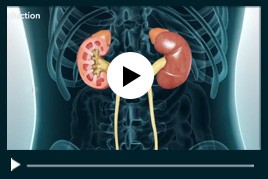Nephroureterectomy
What is laparoscopic nephroureterectomy?
Laparoscopic nephroureterectomy is a surgical technique that involves the removal of the kidney and ureter. It is indicated for the treatment of transitional cell carcinoma (cancer occurring in the tissue lining these organs).
How is laparoscopic nephroureterectomy performed?
Laparoscopic nephroureterectomy is performed under general anaesthesia. Your surgeon makes 3 to 4 small keyhole incisions on the abdomen. A laparoscope (tube with a light and a miniature camera) is inserted to view the abdominal cavity and kidney. The camera is fixed to a video screen which allows your surgeon to have a magnified view of the operating field. Other surgical instruments are inserted through the incisions to access the kidney. The kidney and ureter are freed from the surrounding tissues and dissected. The dissected kidney and ureter are placed in a bag and removed by widening one of the incisions. A catheter may be placed to drain the urine from the bladder.
What are the risks associated with laparoscopic nephroureterectomy?
Like all surgical procedures, laparoscopic nephroureterectomy may be associated with certain complications, which include:
- Injury to surrounding tissues or organs
- Bleeding
- Infection
- Pain or hernia
- Injury to the nearby organs
- Recurrence of disease
What are the advantages of laparoscopic nephroureterectomy?
The advantages of laparoscopic nephroureterectomy when compared to open nephroureterectomy include:
- Faster recovery
- Less post-operative pain
- Smaller incisions and less scarring
- Reduced hospital stay

 Menu
Menu




